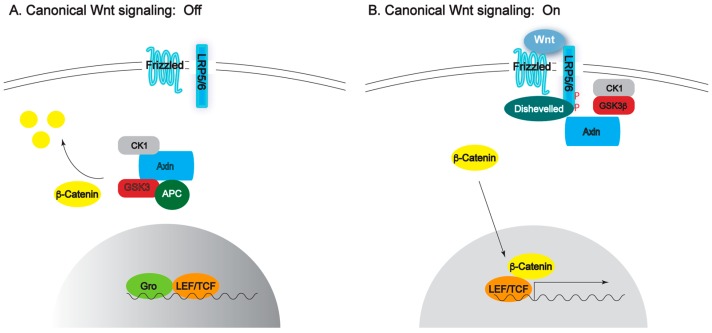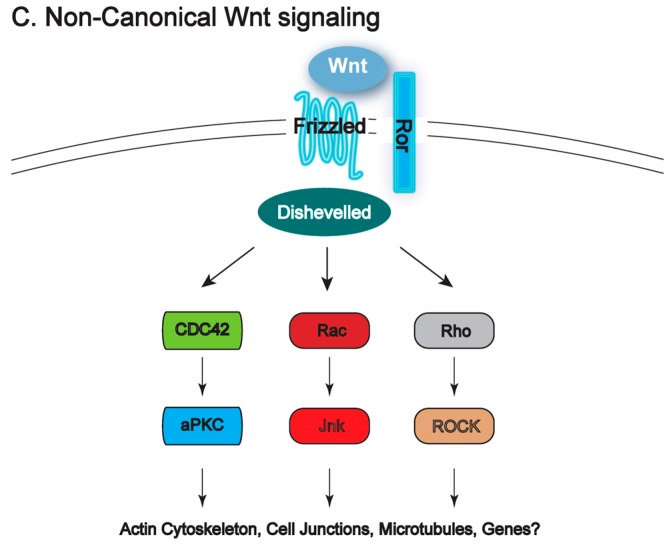Figure 1.
A schematic representation of the Wnt pathway in off (A) and on (B) conformations and the non-canonical Wnt pathway (C). (A) In the absence of Wnt ligand, the destruction complex forms in the cytoplasm bringing together APC and Axin, and presenting β-catenin for phosphorylation by CK1 and GSK3. Phosphorylated β-catenin is ubiquitylated and degraded by the proteasome, and does not enter the nucleus where gene expression is repressed by TCF in complex with the repressor Groucho/TLE; (B) Upon Wnt ligand binding, the activation complex forms at the membrane where the kinase activity of CK1 and GSK3 is redirected toward LRP5/6 in complex with Axin and Dsh. β-catenin is no longer phosphorylated, enters the nucleus, and takes part in transcription along with TCF; (C) The non-canonical Wnt pathway uses a variety of transmembrane proteins like Ror to affect cellular polarity both within the plane of the tissue (PCP) or even within the cell (apico-basal polarity). Figure was adapted from Schlesinger et al. [27].


